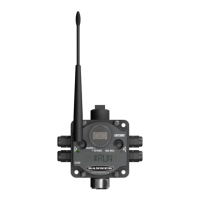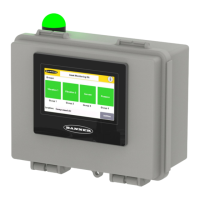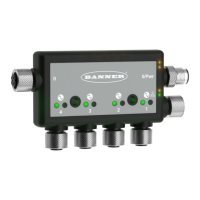What to do if I get a Modbus communication error on my Banner Sure Cross DX80 DX85?
- RRobert CollinsAug 17, 2025
A Modbus communication error on your Banner Gateway DX85 usually indicates a problem with data transmission or a checksum error between the host and the Gateway. Here are a few things to check: * Verify the default communication settings for the RS485 port: 1 start bit, 8 data bits, no parity, 1 stop bit, and 19.2k baud. * Confirm that your DX80 model supports RS485 serial communications. * Ensure RS485 termination or biasing is provided externally to the DX80, as it's not supplied on the Gateway. * Check for bad connections or a faulty cable.



